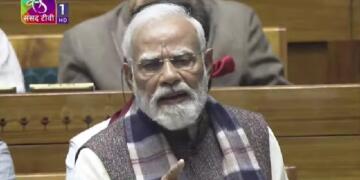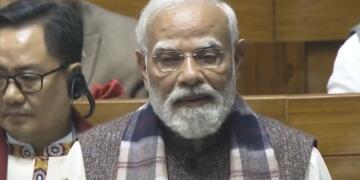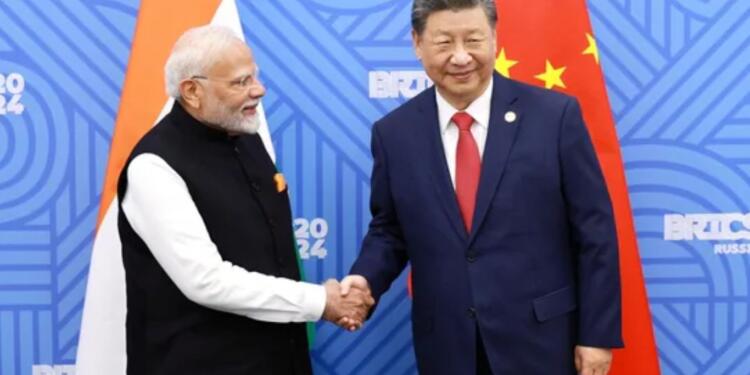Nobody was expecting miracles, but that Prime Minister Narendra Modi and President Xi Jinping met in Russia’s Kazan for a bilateral on the sidelines of the BRICS Summit signals progress if not a thaw.
Nobody can expect negative emotions that defined India-China ties since the intrusions in the Ladakh region in 2020 to unfreeze right away.
The coming winter months will restrict border patrolling on both sides and only the coming summer will tell us if the agreement the two sides reached to resolve the border issue has been implemented in full.
The Modi-Xi meeting only put a formal stamp on the culmination of diplomatic and other efforts through various channels to bring about a rapprochement. The hard work begins now.
But the meeting throws up pointers to take forward the Kazan outcome in the coming months. What makes the task a bit easier is the fact that the two countries continued to have a trading relationship during these bitter years. Promotion of trade and commerce can be the first step to make the deal work.
From India’s point of view, Modi returns with lots of takeaways from Kazan. One has but to analyse Xi’s remarks to understand how not just India but importantly China took considered steps to start reconciling the differences.
Xi referred to India as a “major country”. That is notable considering the rigid hierarchy China maintains while referring to countries. India has certainly come up several notches in his mind.
Secondly, Xi set the framework in which he saw the bilateral. He named “development” as the spearhead when he said “development is currently the ‘greatest common denominator’ between China and India”.
Thirdly, the president stressed that the “essence” of China-India relations is how two large neighboring developing countries with a population of more than 1.4 billion “can get along with each other”.
People’s Daily, the government mouthpiece, reported that Xi said: “The two sides should continue to adhere to the important consensus that China and India are “development opportunities for each other and do not pose a threat to each other” and “are partners rather than competitors”, adhere to the correct strategic cognition, and jointly seek the bright and right path for neighboring large countries to live in harmony and develop together.”
He is quoted also as saying: “Xi Jinping pointed out that China and India are both ancient civilizations, major developing countries, and important members of the global South. Both are in a critical period of modernization in their respective countries.”
The language Xi used to describe India and the bilateral ties is quite novel in his era. One can call it anything – rhetoric or a bold initiative — but there is a new resonance, something that means China acknowledging India’s status as a big neighbour with a large population, just like China. Of course, time alone will tell how seriously China takes the language it used.
Modi reciprocated in equally considerate terms, again, to quote Daily News: “Under the current complex international situation, as two ancient civilizations and two economic engines, India-China cooperation is conducive to promoting economic recovery and world multipolarization. India is willing to strengthen strategic communication with China, enhance strategic mutual trust, and expand mutually beneficial cooperation. India is willing to fully support China’s work as the rotating chair of the Shanghai Cooperation Organization, and strengthen communication and cooperation within multilateral frameworks such as the BRICS.”
The leaders agreed to let the ministers and diplomats launch a fresh series of communications on the border situation and issues. They were pragmatic to understand the complexities involved and were in no mood for platitudes saying they will achieve results at once.
Here is the Chinese interpretation of this aspect: “The two sides believe that this meeting was constructive and of great significance, and agreed to view and handle China-India relations from a strategic and long-term perspective, ‘not let specific differences affect the overall situation of bilateral relations’, and make positive contributions to regional and world peace and prosperity and promoting a multipolar world.”
This appears to be the shared global perspective by the two leaders during their meeting. How they will proceed will depend on several factors, including how the two ongoing conflicts in Asia shape-up in the coming months and who sits in the White House next.
This is where the outcome of the Modi-Xi bilateral is intriguing. A lots has been said about it. The two leaders were equally voluble about how things turned out for them. But the question is, what did they discuss that they are not talking about at the moment?
The context for this is a Xinhua report which said: “Modi put forward ideas and suggestions on improving and developing bilateral relations, to which Xi Jinping agreed in principle.”
Perhaps the Kazan Declaration on the Middle East situation tells us how the BRICS members, especially India and China, exhibited unanimity of intent and purpose: “We reiterate our grave concern at the deterioration of the situation and humanitarian crisis in the Occupied Palestinian Territory, in particular the unprecedented escalation of violence in the Gaza Strip and in West Bank as a result of the Israeli military offensive, which led to mass killing and injury of civilians, forced displacement and widespread destruction of civilian infrastructure.
“We stress the urgent need for an immediate, comprehensive and permanent ceasefire in the Gaza Strip, the immediate and unconditional release of all hostages and detainees from both sides who are being illegally held captive and the unhindered sustainable and at scale supply of humanitarian aid to the Gaza Strip, and cessation of all aggressive actions. We denounce the Israeli attacks against humanitarian operations, facilities, personnel and distribution points.”
PS: This is an article written by Guest Author.




























